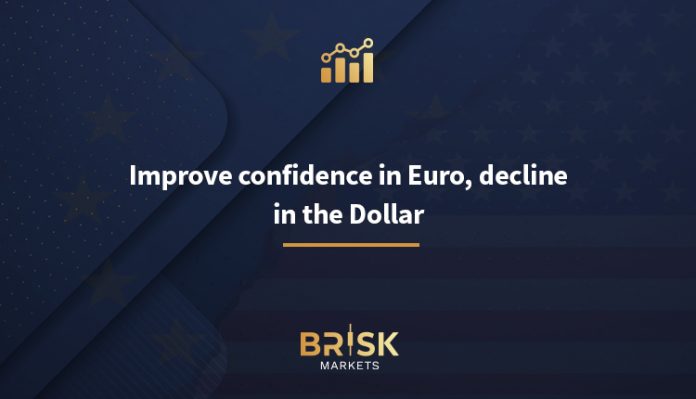The euro started the new trading week quietly. EURUSD rose 0.23%, trading at 1.0787
Eurozone investor confidence shows a slight improvement as the Eurozone investor confidence index took a small step forward in May, rising to -3.6, up from -5.9 in April, and was higher than expected. This was the seventh consecutive acceleration and the highest level since February 2022. The index, which has been in negative territory since February 2022, is crawling to zero, which separates optimism from pessimism.
Services PMIs for Germany and the Eurozone showed slight growth in April, another indicator that the Eurozone economy is showing improvement. After a prolonged decline in services, Germany recorded three consecutive months of expansion and the eurozone two consecutive months.
The ECB is widely expected to cut its primary interest rate in June, as inflation fell to 2.4%. Inflation has proven difficult to push it to the 2% target, but ECB members are more confident that inflation will not rebound after a one-time rate cut. Whether the ECB embarks on a series of interest rate cuts will depend on inflation and other key data.
US Nonfarm Payrolls Falls to 175K
The U.S. economy added 175,000 jobs in April, a sharp decline from 315,000 upwards in March and below market estimates of 240,000. This points to the strong slowdown in job growth seen in the first quarter. Unemployment and wage growth also fell compared to March, and a rather weak employment report makes a September rate cut more likely. The Fed’s interest rate trajectory will be data-driven, focusing on inflation, consumer spending, and GDP.
Financial Markets Analysis: A slight rise in the euro against the dollar
The euro rose slightly during Monday’s trading session in the early hours of the day, as we continue to try to fight against the 50-day moving average. The 50-day EMA is the number one problem you face, because the 200-day EMA is right above.
If we manage to break above the high of the Friday Wild Session, we could see a move towards 1.0850. On the other hand, if we switch and start selling here and the market starts to fall, the target level is 1.07. The 1.07 level has been important many times, however, the 1.07 area will be the area I will watch because if we can break through that level to the downside, it will likely open a movement to the 1.06 level Keep in mind that both central banks are likely to cut interest rates this year.
So, there’s little hesitation to over-exaggerate about one or the other, but it’s worth noting that Europe’s ECB probably cuts interest rates first, so I still think there’s more bearish bias in this pair in the long run. Whether or not it happens right away, of course, remains to be seen, but I certainly think you’re looking for signs of burnout as a greater probability of the outcome here. If we break up and bypass Level 1.0875, we can move to 1.10, but now I think you will need to see a general decline in the US dollar to achieve this, which does not seem to happen. Continuous. The near-term attractiveness of the common currency pair is optimistic as it is trading above the 20-day Exponential Moving Average (EMA), which is trading around 1.0730.
Emulating interest rate speculation weighs on EURUSD in the European session
The EURUSD pair rose to 1.0787 in the European session on Monday. The main currency pair posts gains as the US dollar is under pressure due to strong speculation that the Federal Reserve (Federal Reserve) will start cutting interest rates from the September meeting. The move will come in the EURUSD pair On the US dollar side, the Eurozone economic calendar lacks first-level data this week. The ECB is widely expected to turn to policy normalization at the June meeting. Therefore, speculation about the ECB’s stance on interest rates for the second half of the year will affect the movement of the euro.
ECB policymakers are divided on whether to extend the rate cut cycle after the June meeting. A few policymakers believe that extending interest rate cuts from the July meeting could lead to renewed price pressures. Over the course of the whole year, ECB policymaker and Bank of Greece Governor Yannis Stournaras said in an interview with a Greek media outlet that he expects three rate cuts this year. He sees a July rate cut as possible, adding that the eurozone’s economic recovery in the first quarter of the year made three cuts more likely than four. Eurozone economy grew 0.3% in January-March, beating expectations for a gain of 0.1%.
A few policymakers are signaling the possibility of an extension of the rate-cutting cycle from the July meeting, with fears of renewed price pressures. It is noted that policymakers are looking at the economic performance in the euro zone throughout the year, as the region’s economy recorded growth of 0.3% in the first quarter, exceeding expectations.



